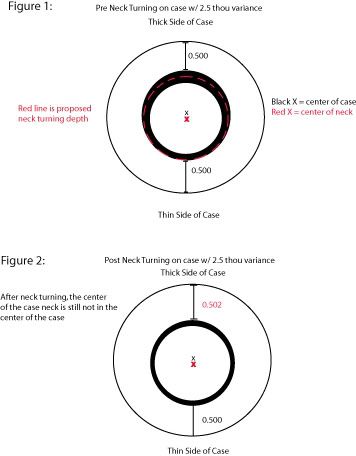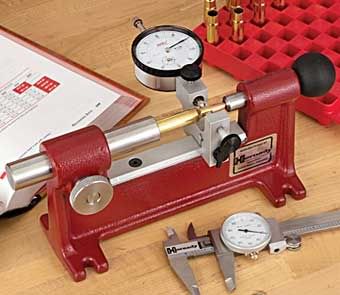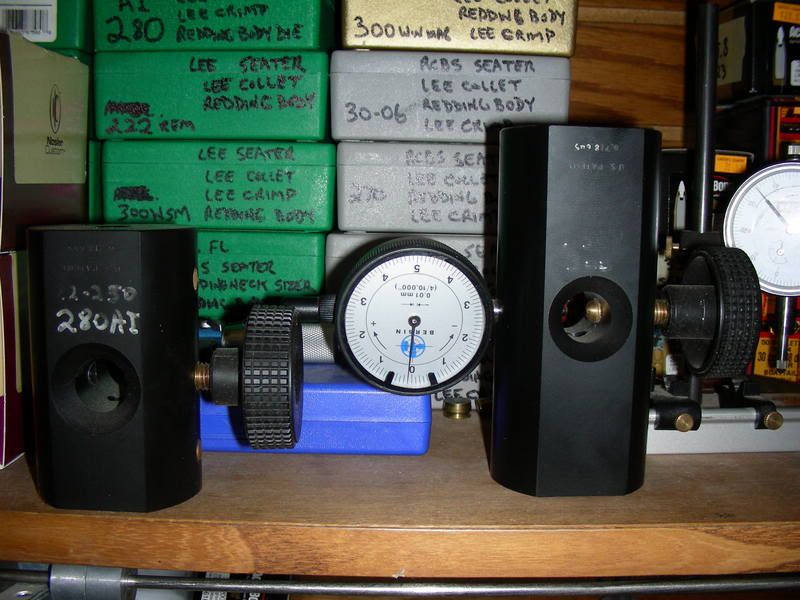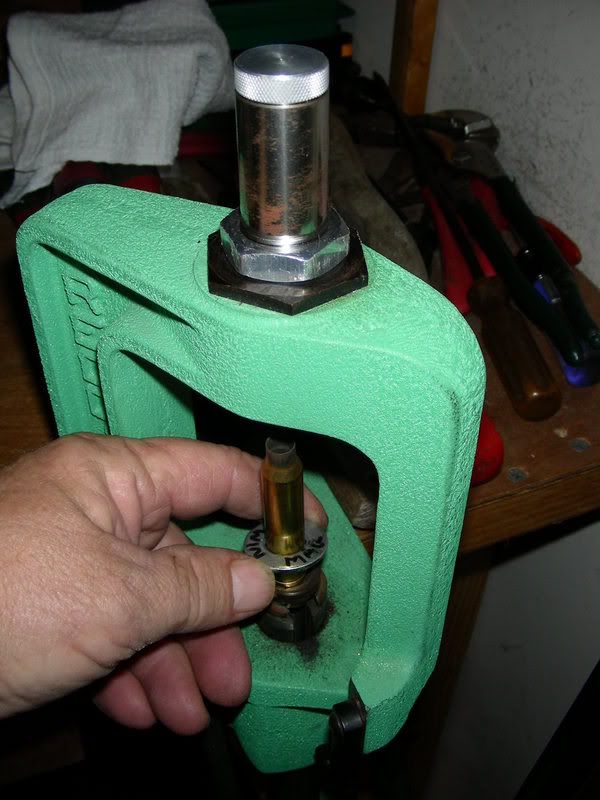Guys,
I dont know if I am measuring right. I use a Neco Runnout gauge. Problem is that I don't get anywhere near the accuracy that THH mentioned, and I also use benchrest dies. Not sure if it is the measurement or actually is a real problem.. But, I would love to hear how you guys get to .000-.002 in runnout. I am closer to 0.005-0.010... Groups are good, 1/2" normally.
I neck turn and size in the same step. Then chamfer. I use forster benchrest dies. Partially seat the bullet, then bring it down, turn the cartridge a 1/4 turn, and then seat the rest of the way. Length is perfect, but I measure run out as in this pic
http://www.neconos.com/details.htm
thanks for educating me!
Hardpan
I dont know if I am measuring right. I use a Neco Runnout gauge. Problem is that I don't get anywhere near the accuracy that THH mentioned, and I also use benchrest dies. Not sure if it is the measurement or actually is a real problem.. But, I would love to hear how you guys get to .000-.002 in runnout. I am closer to 0.005-0.010... Groups are good, 1/2" normally.
I neck turn and size in the same step. Then chamfer. I use forster benchrest dies. Partially seat the bullet, then bring it down, turn the cartridge a 1/4 turn, and then seat the rest of the way. Length is perfect, but I measure run out as in this pic
http://www.neconos.com/details.htm
thanks for educating me!
Hardpan










